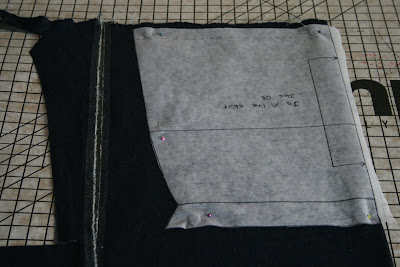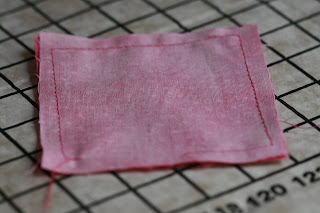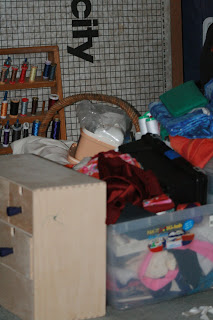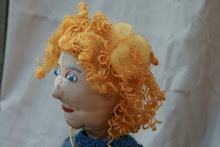If you haven't done much sewing before it's worth taking some time to get used to the machine. The sewing machine manual can be a bit intimidating, but it has all the information you need to use the machine well. First look for a picture which identifies all the parts of the machine.
Before you thread up the machine have a go at sewing along some lines on a piece of scrap paper. Draw yourself some straight lines, some corners and some curved lines. Put the paper under the presser foot, lower the presser foot and go. You need to get a feel for how hard to press on the foot pedal to get a steady pace and also get a feel for "steering".
The feed dog is the little mechanism just under where you sew. It actually grips the fabric (paper for now) and pushes it along. So you don't need to grip and push while you're sewing. Just steer gently. Take another piece of paper and see what happens if you let go after you've started sewing. You should find that the machine keeps a reasonably straight line without any help at all.
To turn a corner, leave the needle right down, lift the presser foot, turn, put the presser foot back down and keep sewing. The needle will hold everything in place while you turn the corner.
Next, practice threading up the machine. There will be a diagram in the machine's manual. You will need to wind yourself a bobbin, so do that first. The bobbin holds the thread for the underneath part of the stitch.
Now have a go at sewing some random lines on a piece of scrap fabric. Fold the fabric over and see how it feels to sew a real seam. On most machines you need to hold the two threads firmly behind the presser foot for the first couple of stitches. You know that the sewing machine will hold a steady course, even if you don't steer it for few seconds, so you don't need both hands on the fabric all the time.
 Here's the circle cut out. You can see where I've marked the inner circle ready to cut. The circumference of the inner circle will match the bottom of the denim part of the skirt . . .
Here's the circle cut out. You can see where I've marked the inner circle ready to cut. The circumference of the inner circle will match the bottom of the denim part of the skirt . . . Here's a pic of it all cut out. I've cut it on the fold, so you can only see half in this pic.
Here's a pic of it all cut out. I've cut it on the fold, so you can only see half in this pic.

 Here's a hand-made bag given to me by my friend Anna--beautiful indigo fabric and by virtue of some clever seaming, which I haven't quite fathomed yet, reversible too . . . oh, and that's Dorothy the Sheep keeping an eye on things!
Here's a hand-made bag given to me by my friend Anna--beautiful indigo fabric and by virtue of some clever seaming, which I haven't quite fathomed yet, reversible too . . . oh, and that's Dorothy the Sheep keeping an eye on things!








 Fabric folded selvedges to middle, giving me two fold lines on which to place the pattern.
Fabric folded selvedges to middle, giving me two fold lines on which to place the pattern.



















